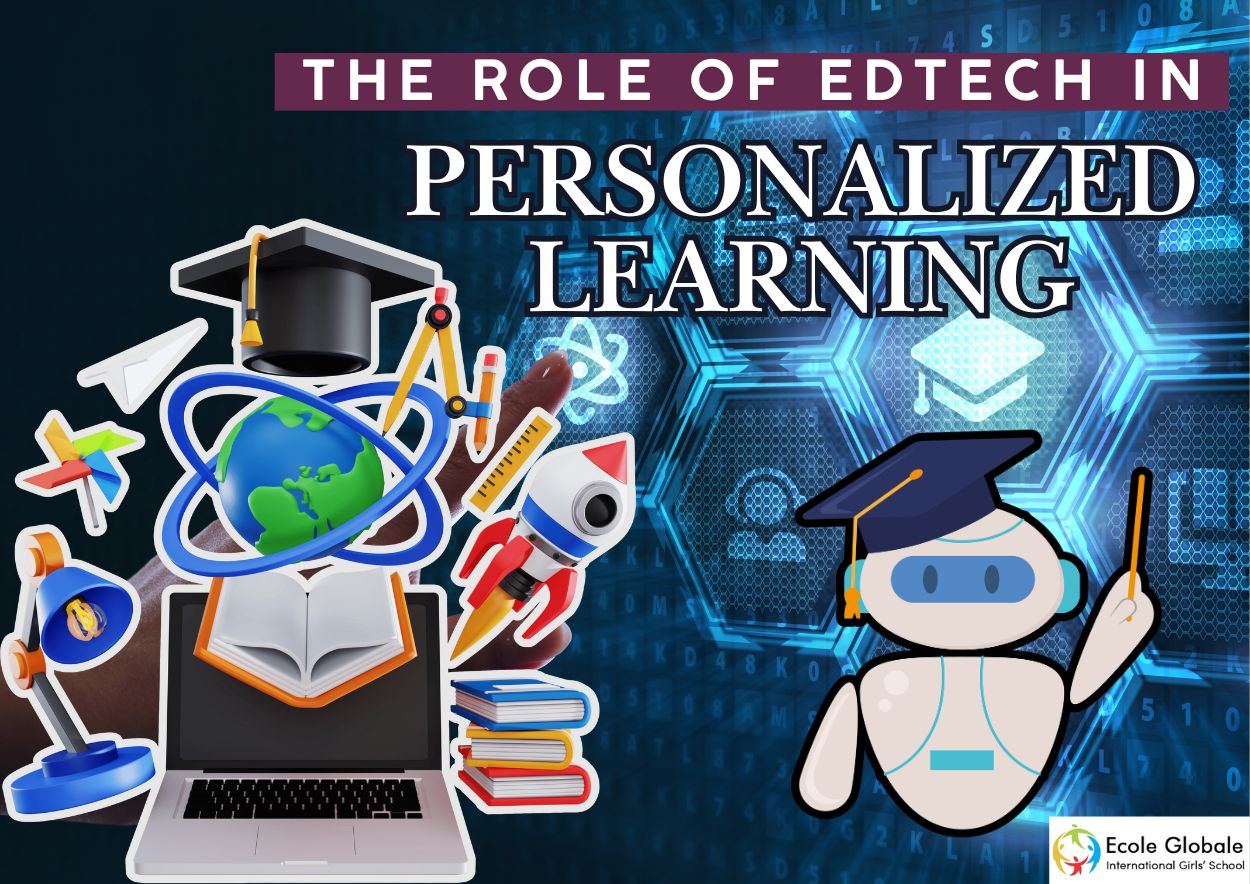In today’s fast-paced digital era, EdTech (Educational Technology) is revolutionizing the way students learn and parents engage in their children’s education. The integration of technology in education has paved the way for personalized learning, allowing students to progress at their own pace and according to their unique learning needs. With the rise of smart classrooms, AI-driven tools, and interactive learning platforms, EdTech is reshaping the educational landscape.
What is EdTech?

EdTech refers to the use of technology, software, and digital tools to facilitate and enhance learning. From interactive whiteboards to artificial intelligence-driven tutoring, educational technology encompasses a broad spectrum of innovations that are transforming traditional teaching methodologies into dynamic, student-centered approaches.
The Need for Personalized Learning
Every student has a distinct learning style, pace, and set of interests. Traditional education systems often follow a one-size-fits-all approach, which may not cater to the diverse needs of students. Personalized learning, powered by EdTech, tailors educational content, pacing, and methodologies to suit individual learners, ensuring they grasp concepts more effectively and remain engaged.
How EdTech Facilitates Personalized Learning

1. Adaptive Learning Platforms
Modern EdTech solutions use adaptive learning algorithms that analyze a student’s progress and adjust the difficulty level accordingly. Platforms like Khan Academy, Coursera, and Duolingo employ AI-driven models to customize learning experiences.
2. AI-Powered Tutoring
Artificial intelligence is making it possible for students to receive real-time assistance through intelligent tutoring systems. AI-based chatbots and virtual tutors provide instant feedback, suggest additional resources, and address queries in real time.
3. Gamification for Better Engagement
Gamified EdTech platforms incorporate elements like quizzes, badges, and leaderboards to make learning more engaging. This approach keeps students motivated while reinforcing key concepts through interactive challenges.
4. Data-Driven Insights for Parents and Educators
One of the biggest advantages of EdTech is its ability to track student progress through data analytics. Teachers and parents can monitor performance metrics, identify areas of improvement, and provide targeted support.
5. VR and AR for Immersive Learning
Virtual Reality (VR) and Augmented Reality (AR) are adding a new dimension to learning. With EdTech tools like Google Expeditions and Nearpod VR, students can explore historical landmarks, conduct virtual science experiments, and visualize complex concepts in an immersive environment.
The Growth Of Ed-Tech

Indeed, even before COVID-19, e-learning was an industry that was developing dramatically, particularly getting pace throughout the most recent five years or somewhere in the vicinity. In any case, the unexpected development of the pandemic incited every one of the schools to select online training to keep away from instructive and learning misfortune for youngsters. The EdTech business along these lines developed and advanced surprisingly fast, which might have required years!
The Benefits of EdTech in Personalized Learning
1. Flexibility and Accessibility
With EdTech, students can access learning materials anytime, anywhere. This is especially beneficial for those with learning disabilities or those who require extra time to grasp concepts.
2. Increased Student Engagement
Interactive lessons, multimedia content, and AI-driven quizzes keep students engaged and motivated to learn more effectively than traditional textbooks.
3. Improved Retention Rates
Studies show that students retain more information when they actively participate in learning. This tools facilitate experiential learning, making concepts more memorable.
4. Bridging Learning Gaps
Not all students learn at the same pace. This helps bridge learning gaps by providing customized content that caters to each student’s strengths and weaknesses.
5. Encourages Self-Paced Learning
With access to digital resources, students can revisit lessons, practice at their own pace, and take charge of their learning journey, leading to better academic outcomes.
Challenges and the Future of EdTech in Personalized Learning

Despite its numerous benefits, It also presents challenges that need to be addressed:
- Digital Divide: Not all students have equal access to technology and the internet.
- Over-Reliance on Technology: Balancing traditional learning methods with EdTech is crucial.
- Data Privacy Concerns: Protecting students’ information and ensuring cybersecurity in EdTech platforms is a growing concern.
As technology continues to evolve, the future of EdTech in personalized learning looks promising. The integration of AI, blockchain in education, and enhanced virtual learning environments will further refine and expand the possibilities for students and parents.
Conclusion
The impact of EdTech on personalized learning is undeniable. By leveraging advanced digital tools, students can experience a tailored learning journey that aligns with their unique needs and aspirations. Parents, too, can actively participate in their child’s academic growth through insightful data and interactive learning solutions. As it continues to shape the future of education, embracing its potential will be key to fostering a more effective and engaging learning experience for students worldwide.









